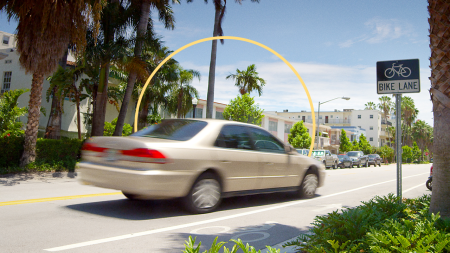It’s a good idea to familiarize yourself with Regulation E if you have a bank account and use a debit card, visit ATMs, make payments over the phone or have direct deposit.
Reg E, as it’s commonly called, can protect you if money is fraudulently or mistakenly withdrawn or deposited into your account by electronic means.
What is Regulation E, and how does it protect you?
Regulation E is a federal regulation that protects consumers against fraudulent and incorrect electronic fund transfers (EFTs) to or from their bank accounts. It gives consumers a process for disputing unauthorized or erroneous EFTs, such as unapproved debit card withdrawals, and it limits consumer liability for a lost or stolen debit card.
Reg E also outlines the responsibilities of financial institutions that participate in EFTs. Reg E is the implementation of the Electronic Funds Transfer Act (EFTA), a federal consumer protection law.
What types of transactions are covered under Reg E?
Regulation E applies to any EFT, which the Consumer Financial Protection Bureau (CFPB) defines as “any transfer of funds that is initiated through an electronic terminal, telephone, computer or magnetic tape for the purpose of ordering, instructing or authorizing a financial institution to debit or credit a consumer’s account.”
The following types of transactions are EFTs and fall under Reg E:
- Point-of-sale transfers
- ATM transfers
- Direct deposits and withdrawals (Automated Clearing House, or ACH, transfers)
- Debit card transactions
- Fund transfers via telephone, such as a bill payment
- Person-to-person payments, using Zelle, for example
- Gift cards
What is not covered by Regulation E?
Not all electronic account transactions are covered. These transactions do not fall under the Reg E umbrella:
- Fund transfers initiated by check or similar paper instruments
- Wire transfers
- Credit card transactions
There are some scenarios where consumers may think they are protected by Reg E, but they are not. For example, if you sign up for an introductory or trial offer for a product without understanding that you’ll be enrolled in a monthly subscription for the product once it ends, that doesn’t fall under Reg E, says Kelly Pickle, director of enterprise risk and senior vice president at Minnesota-based Heritage Bank.
“(People) don’t necessarily read the fine print,” Pickle says. “And they end up needing to have it canceled within, like, 30 days, otherwise they’re enrolled in this subscription.”
In that case, the dispute should be taken up with the vendor or merchant, Pickle says.
Hank Israel, managing director of Curinos, a data intelligence business serving financial institutions, says, “There are two sets of issues: Did I intend to make that purchase, or did I not intend to make that purchase? If I intended to make it, it’s not a Reg E claim.
“Is your issue with the vendor or the bank? That’s the tight spot.”
Reg E parameters also can get a little fuzzy with mobile payment applications such as Zelle that allow peer-to-peer (P2P) money transfers. Zelle is a popular P2P application that requires the user to log in to their account before they send a payment.
“No one can debit your account through Zelle,” Israel notes. “They can credit it, but they can’t debit it. When you initiate a payment from your account where you have logged on with your credentials and you push a payment to someone else and you do not get what you paid for, that is a situation that is gray.
“When you make a Reg E claim, what you’re saying is, ‘I didn’t authorize this.’”
Israel gives a personal experience to illustrate his point: He bought something online for $75 and paid using his PayPal account. “What I got in the mail was not what I ordered,” he said. “Did I authorize the PayPal payment? Yes, I did. Did I get defrauded? Yes, I did, but not by PayPal.”
Filing a Reg E dispute with your bank
Most banks provide a phone number on the back of their debit cards that consumers can call and get routed to the right person to file a Reg E dispute, says Israel.
“The bank has time to review it and can give you a provisional credit,” he says. “They may change your account number to make sure it’s locked down or replace your debit card.”
Some banks may require you to submit your dispute in writing, even if you already reported it to a bank representative over the phone.
Expect to provide several pieces of information, such as:
- The dollar amount of the transaction you’re disputing
- Type of merchandise or service
- Date of the transaction
- Date the transaction posted to your account
- Whether your debit card was lost
Israel encourages consumers to file a dispute, even if they’re not certain the transaction is covered under Reg E. “Banks do care about their customers. A broad number of banks will try to intervene for you where they can.”
Another advantage of filing a dispute is that it helps banks to see if certain payment apps or vendors are being cited frequently in customer claims. So, even if you don’t get your money back, you might be helping the bank detect fraud.
How long the dispute process could take
Reg E requires your bank to investigate disputes promptly and make a determination within 10 business days of receiving your claim, according to the CFPB. Your bank is required to correct the error within one business day of determining an error occurred.
If the bank can’t complete its investigation within 10 business days, it has up to 45 days from receipt of the dispute to investigate and make a determination. In those instances, your bank must generally give you a provisional credit within 10 days after the bank received your dispute.
Monitor your account closely to limit your liability
Getting text alerts of transactions, checking your bank’s mobile app on a regular basis and logging in to your online bank account can help you catch and stop unauthorized transfers from happening again. At the very least, you should check your monthly bank statement.
You must report an unauthorized debit that appears on your statement within 60 days of the statement issue date to avoid being responsible for future transfers. Monitoring your account can also save you some potential liability.
- Reporting a loss or theft of a debit card within two business days limits your liability to the lesser of $50 or the amount of the unauthorized withdrawals that occurred before you notified your bank.
- Not giving timely notice by failing to let your bank know within two days of realizing your debit card is missing is likely to increase your potential liability.
“We don’t know what’s legitimate and what’s not until the customer tells us,” Pickle says.
Bottom line
Whether you use a debit card, receive direct deposits or use ATMs, familiarizing yourself with Regulation E helps protect you from fraudulent or erroneous transfers to or from your bank account. Filing a Reg E dispute with your bank may provide recourse when you find such activity has taken place, with the bank required to investigate promptly. Monitoring your bank accounts closely can help you catch these types of transfers and stop them from happening in the future.
— Bankrate’s Karen Bennett and Libby Wells contributed to an update of this story.
Read the full article here
















